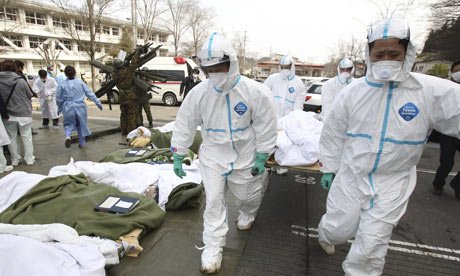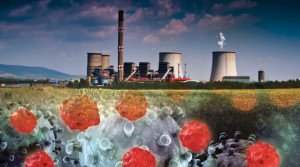Health consequences of the Fukushima disaster
3 min read
The results of two studies in the 15 August issue of JAMA report on the psychological status of workers at the Fukushima nuclear power plants in Japan several months after the earthquake and tsunami in March 2011, and the amount of internal radiation exposure among residents of a city north of the power plant that experienced a meltdown
As reported in a Research Letters, Jun Shigemura, M.D., Ph.D., of the National Defense Medical College, Saitama, Japan, and colleagues examined the psychological status of Fukushima workers two to three months after the disaster for symptoms of general psychological distress, including posttraumatic stress response (PTSR). The study included all full-time workers from the Daiichi plant (n = 1,053; plant experienced meltdown) and Daini plant (n = 707; plant experienced damage but remained intact) in May and June 2011. Using a self-report questionnaire, the researchers assessed sociodemographic characteristics and disaster-related experiences, including discrimination/slurs because the electric company that managed these plants was criticized for their disaster response and the workers have been targets of discrimination. Measures of general psychological distress included feeling nervous, hopeless, restless/fidgety, depressed, and worthless in the last 30 days.
A JAMA release reports that of 1,760 eligible workers, 1,495 (85 percent) participated (Daiichi: n = 885 [84 percent]; Daini: n = 610 [86 percent]). The authors found that compared with Daini workers, Daiichi workers were more often exposed to disaster-related stressors. Experiencing discrimination or slurs was not statistically significantly different between groups (14 percent vs. 11 percent). The researchers found that general psychological distress and PTSR were common in nuclear plant workers two to three months after the disaster. “Daiichi workers had significantly higher rates of psychological distress (47 percent vs. 37 percent) and PTSR (30 percent vs. 19 percent). For both groups, discrimination or slurs were associated with high psychological distress and high PTSR. Other significant associations in both groups included tsunami evacuation and major property loss with psychological distress and pre-existing illness and major property loss with PTSR.”
In another Research Letters, Masaharu Tsubokura, M.D., of the University of Tokyo, and colleagues conducted a study to gauge the level of radiation exposure to residents of the city of Minamisoma, located fourteen miles north of the Fukushima Daiichi nuclear plant. “Release of radioactive material into the air, water, and soil raised concern about internal radiation exposure and the long-term risk of cancer in nearby residents,” they write.
Many residents were evacuated after the meltdown, but by August 2011, approximately half had returned. A voluntary screening program for levels of cesium, known to be representative of total internal radiation exposure, was conducted between September 2011 and March 2012 for all residents ages six years or older. Total cesium exposure was converted into committed effective dose (sievert, Sv). Common dose-limit recommendations for the public are 1 mSv or less. A total of 9,498 residents enrolled in the study, 24 percent of the registered population on 15 August 2011. The sample consisted of 1,432 children and 8,066 adults. A total of 3,286 individuals (34.6 percent) had detectable levels of cesium, including 235 children (16.4 percent) and 3,051 adults (37.8 percent). Committed effective doses were less than 1 mSv in all but 1 resident (1.07 mSv).
“To our knowledge, this is the first report on internal exposure to cesium radiation after the Fukushima Daiichi nuclear plant incident. In this sample, exposure levels were low in most adults and children tested and much lower than those reported in studies years after the Chernobyl incident. Even the highest levels of contamination observed are below the thresholds for the administration of Prussian blue [an antidote used in the treatment of cesium poisoning],” the authors write.
The researchers note that because this screening program started 6 months after the nuclear power plant disaster, higher exposure levels might have been detected earlier, and that it is not possible to ascertain whether the low levels of exposure were due to low ongoing exposure or decay from high exposure values. “Because data were collected from volunteers, the results may not be representative of the entire population in contaminated areas. No case of acute health problems has been reported so far; however, assessments of the long-term effect of radiation requires ongoing monitoring of exposure and the health conditions of the affected communities.”
— Read more in Jun Shigemura et al., “Psychological Distress in Workers at the Fukushima Nuclear Power Plants” Research Letters, JAMA 308, no 7 (15 August 2012): 667-69 (doi:10.1001/jama.2012.9699); and Masaharu Tsubokura et al., “Internal Radiation Exposure After the Fukushima Nuclear Power Plant Disaster,” Research Letters, JAMA 308, no. 7 (15 August 2012): 669-70 (doi:10.1001/jama.2012.9839 )






